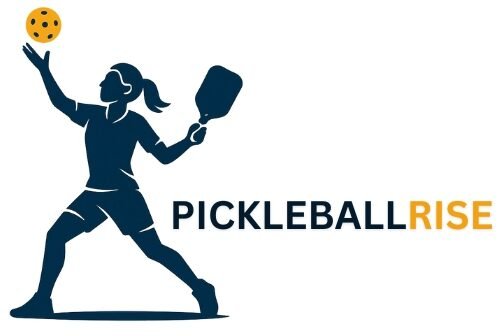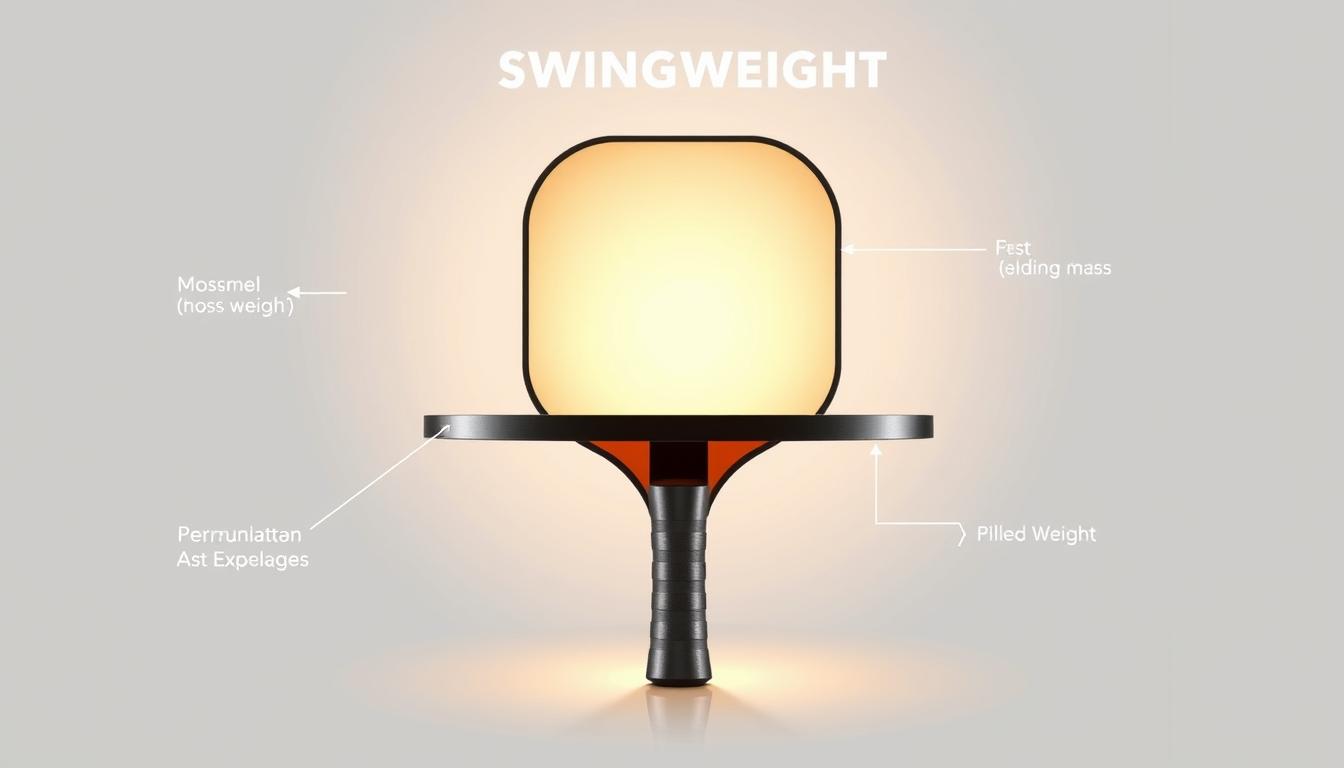How to Quickly Identify the Best Pickleball Paddle for Your Game
That moment on the court is crucial. It’s when you poach at the kitchen line or serve just inside the sideline. A good paddle can win you the point, or show it’s time for a new one.
After years of playing and testing, you learn what makes a great pickleball paddle. It’s not about the flashiest design or the heaviest swing. It’s about finding the right feel, shape, and weight for your game.
This guide will show you the five key specs to look for. These are core material and thickness, paddle shape, facing layups and materials, weight distribution, and construction method. It’s based on real testing and reviews, like the Honolulu Sword & Shield J2NF and 11SIX24 Pegasus. It helps you find the best paddle for your game, beyond the marketing.
First, think about your playing style. Do you need a paddle for touch and forgiveness, or one for power and spin? Once you know, you can use this guide to make a confident choice.
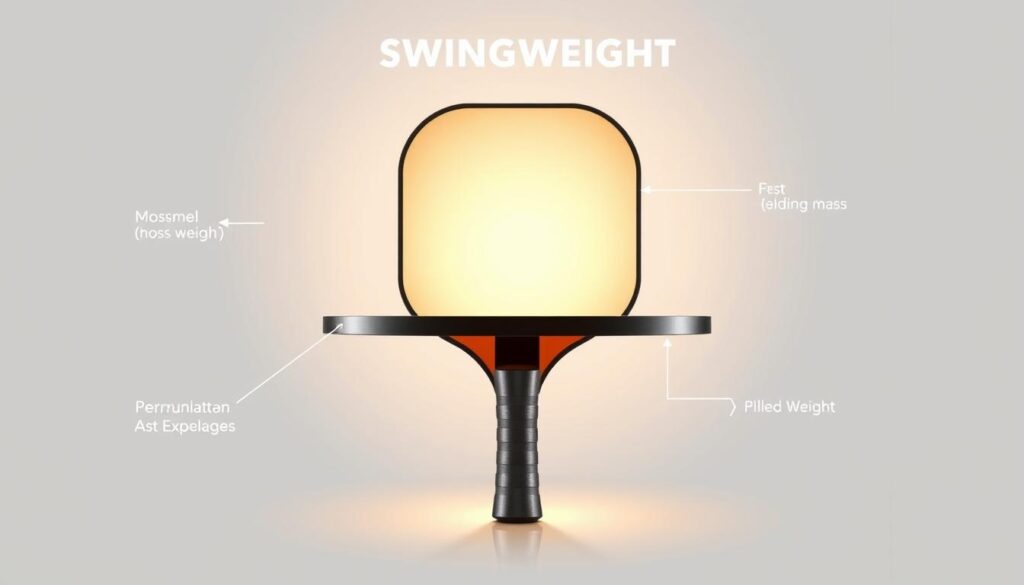
How paddle core and thickness determine feel and forgiveness
You want a paddle that matches your touch and reduces mistakes. Core material and thickness shape how a paddle feels. They also affect how much forgiveness it gives and how long it keeps that feel. Choices range from traditional polypropylene core honeycomb to new full foam designs, each with trade-offs for pop, control, and durability.
Polypropylene (honeycomb) vs foam cores
Polypropylene cores use a honeycomb cell structure. This structure varies by cell size, wall thickness, and polymer density. These variables change rebound, sweet spot size, and consistency during fast rallies.
You get crisp pop and quick response with many polymer designs. But sweet spots can be smaller than foam cores.
Full foam cores, like Gen 4 designs from Honolulu and CRBN TruFoam, give more dwell time. They also have a larger hitting surface. Foam cores tend to feel softer and quieter, which helps on dinks and touch shots. They also resist the early degradation that some older honeycomb cores showed.
How core thickness (14mm vs 16mm and beyond) affects pop, control, and sweet spot
Core thickness shifts the paddle’s balance between offense and forgiveness. A 14mm core feels firmer and delivers more pop for aggressive drives and fast volleys. You trade some stability and sweet spot size for added maneuverability.
Thicker cores, starting at 16mm and going higher, increase softness and give larger sweet spots. Those cores absorb impact, boost control, and help beginners reduce mis-hits. Players who favor placement and consistency often pick thicker cores for their forgiving nature.
Durability differences: why foam cores (Gen 4) are gaining popularity
Durability matters when you invest in the best pickleball paddle for long-term play. Gen 4 foam cores hold shape longer than many earlier polymer honeycomb cores. That stability preserves feel and bounce over months of play.
Brands such as CRBN have marketed TruFoam formulations to combine dwell time with lasting resilience. Players report less loss of performance over time. This improves pickleball paddle durability and keeps a paddle feeling consistent through heavy use.
When you compare options, think about your priorities. If you want pop and quick reaction, a 14mm polypropylene core may suit you. If you need forgiveness, touch, and longer-lasting feel, look closely at foam cores and thicker core builds. Find the best pickleball paddle for your game.
How paddle shape affects reach, spin, and forgiveness
Paddle shape changes how you reach for shots, create spin, and recover after a miss. A compact face gives quick hands near the net. A longer face gives added reach and bite on groundstrokes. You will notice trade-offs when you test different shapes on court.
Widebody, hybrid, and elongated shapes explained
A widebody paddle centers the sweet spot and widens the hitting area. This design helps with off-center hits and short reaction times. Many beginner-friendly models and popular designs like wider versions from Selkirk or Paddletek fit this mold.
A hybrid shape narrows the face slightly while keeping some width near the handle. It blends reach and forgiveness. Brands such as Onix and Engage offer hybrids that suit players who want balance between control and power.
An elongated paddle stretches the face vertically to add reach and leverage for spin and power. Pros and aggressive baseliners often choose elongated paddle designs to hit deeper, heavier shots. Expect a smaller sweet spot and a head-heavy feel with these models.
Which shape suits beginners, intermediates, and pro-style players
If you are starting out, choose a widebody paddle for a larger sweet spot and easier control. That lowers the learning curve and helps you keep rallies alive.
As an intermediate player, you may prefer a hybrid that gives extra reach when you need to finish points but still offers forgiveness for dinks and volleys.
If you play at an advanced or pro-style level, consider an elongated paddle to add spin and court coverage on groundstrokes. Expect to work on timing and anticipate fewer forgiving misses.
Practical advice: choosing a shape based on your on-court position and style
If you mainly play at the net, prioritize maneuverability and quick reaction. A widebody paddle helps you volley confidently and control tight angles.
If you cover the baseline or play singles, reach and spin matter more. An elongated paddle gives extra length to attack and track ball trajectories from deeper positions.
If you rotate between net and baseline, a hybrid often makes the most sense. Try a few models during a lesson or practice session to feel differences in swingweight and sweet spot.
When you compare options, perform a simple pickleball paddle comparison: note sweet spot size, balance point, and how the shape affects your recovery. Testing a handful of the best paddles for pickleball in your price range will clarify which paddle shape matches your game.
Facing materials and layups: control, power, and spin trade-offs
Choosing the right facing materials changes how your paddle feels. You’ll see differences in pop, forgiveness, and spin between carbon and fiberglass paddles. Manufacturers adjust layups to enhance power or reduce impact for better touch.
Carbon fiber, fiberglass, kevlar, and titanium surface characteristics
Carbon faces, like T700 carbon, offer a large sweet spot and crisp control. Textured carbon faces, used by brands like Vatic Pro and CRBN, provide excellent spin. Carbon paddles feel stiff but can be surprisingly soft on short strokes.
Fiberglass paddles flex more on impact and return strong pop on drives and slams. Budget and midrange models, such as the 11SIX24 Pegasus and Bread & Butter Filth, use fiberglass for more offensive play. Fiberglass paddles have a smaller sweet spot and a more aggressive feel.
Kevlar, or aramid, is between carbon and fiberglass. It offers lively response with a firmer bite than carbon but softer than fiberglass. Titanium weaves, introduced recently, reduce snap and favor controlled, softer impacts for players who value touch.
Common layups (CCC, CCF, CFC) and how they change response
Layup patterns affect where power and control appear in your swing. CCC, with three carbon layers, boosts the sweet spot and tightens response for precise placement. This setup enhances control and predictable dwell.
CCF blends two carbon plies with a fiberglass layer. It keeps short game control crisp while adding pop to larger swings from the fiberglass. This mix suits players who need both touch and occasional offense.
CFC places fiberglass between two carbon skins. This layout brings fiberglass into play earlier in the stroke. You gain quicker access to pop while carbon skins preserve spin potential and aiming consistency.
What facing material you should prefer for spin, touch, or raw power
For spin-heavy play, choose a textured or raw T700 carbon face. Models like Vatic Pro Prism Flash and CRBN are known for their bite and “velcro” grip on the ball.
If touch matters most, pick carbon or kevlar faces with a thicker, more damped core. This combo extends dwell time for finesse on drop shots and dinks.
For raw power, look for fiberglass layers or layups that expose fiberglass early, as seen in some 11SIX24 and Bread & Butter offerings. These paddles deliver strong pop at lower price points, often highlighted in pickleball paddle comparison testing.
Read pickleball paddle reviews and use a focused comparison to match facing materials with your game. Your ideal paddle will balance facing materials, layup, and core for the control, power, or spin you need.
Weight distribution: static weight, swingweight, and twistweight
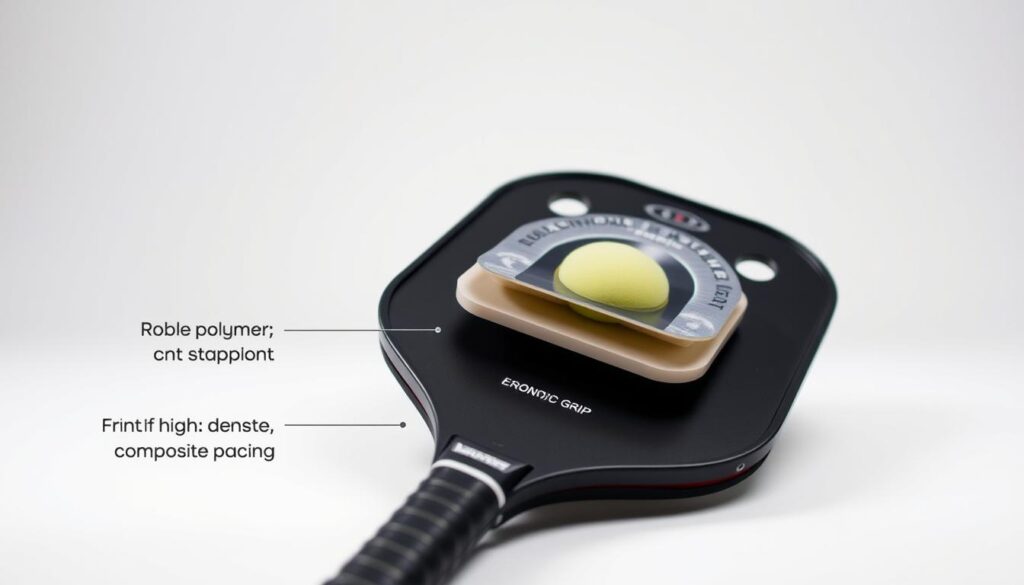
Knowing how weight is distributed in a paddle is key, not just the ounces listed. Static weight shows the paddle’s mass. Swingweight measures how much it resists when you swing it. Twistweight shows how it handles off-center hits.
The Honolulu J2NF has a swingweight of about 110. This makes it fast at the kitchen. Two paddles that weigh the same can feel different, depending on where the weight is.
Why two paddles with the same ounces can feel different
Static weight gives a basic idea, but how the weight is spread changes everything. Paddles that are heavier at the head have more power. Those heavier at the handle are quicker to move.
Twistweight affects forgiveness. Higher twistweight means less torque on off-center hits. This helps protect your sweet spot.
Recommended swingweight and twistweight ranges for balanced play
Most players aim for a swingweight of 112 to 118 and a twistweight over 6. Most paddles are between 100 and 140 swingweight. Twistweight usually ranges from 5 to 8.
Long paddles have higher swingweight and lower twistweight. Hybrid shapes are in the middle. Widebody paddles have lower swingweight and higher twistweight.
How to adjust feel with lead tape or grip changes
You can change a paddle’s feel without buying a new one. Add lead tape at the head for more power. Add it near the handle for less head weight.
Changing grip size or adding overgrip changes balance and swing. Beginners like lighter paddles for less fatigue. Intermediates might prefer heavier paddles for more power.
If buying online, check swingweight and twistweight, not just static weight.
| Paddle Shape | Typical Static Weight (oz) | Typical Swingweight | Typical Twistweight | On-court effect |
|---|---|---|---|---|
| Widebody | 7.4–8.0 | 108–114 | 6.5–8 | Forgiving sweet spot, easier control at the net |
| Hybrid | 7.5–8.2 | 113–118 | 6–7 | Balanced power and maneuverability for versatile play |
| Elongated | 7.6–8.3 | 116–124 | 5–6.5 | Extra reach and power, requires stronger technique |
For tournament play, follow USAPA rules and manufacturer advice. When buying online, look for clear swingweight and twistweight data. This helps you know how the paddle will perform before it arrives.
Construction methods and generations: what the labels mean
When you shop for paddles, you’ll see labels like cold pressed, thermoformed, widened foam edge, and full foam core. These labels tell you how the paddle is made. They also hint at its feel, power, and how long it will last.
Cold pressed paddles were made using an older method. They bond facings to a polymer core under pressure. These paddles are known for their touch and consistent control. You’ll find them in many classic models.
Light thermoforming adds foam around the edge inside a carbon fiber rim. This mix keeps the control of cold pressing but adds edge stability.
Full thermoforming fuses facings and a carbon perimeter with heat. It also adds foam. This method boosts power and stability for all-court play. Modern designs often use this to fine-tune the sweet spot and feedback.
Widened foam edge expands the foam wall around the face. This makes the sweet spot more powerful. JOOLA’s models, for example, focus on pop on drives and serves.
Full foam core paddles replace honeycomb with a continuous foam center. New designs like CRBN TruFoam show how Gen 4 foam cores improve dwell time, spin, and shape retention.
What construction types offer control, power, or longevity? Cold pressed and classic polymer cores are great for precise touch and feedback. Thermoformed paddles with widened foam edges boost power and sweet spot size. Full foam core paddles offer a balance of feel and durability, reducing delamination risk while keeping response lively.
Construction is not just about one thing. A carbon fiber face with a Gen 4 foam core will give more dwell time and spin than the same face over honeycomb. Thermoformed perimeters can hide thin face layups or make lighter paddles feel more powerful. Match the facing material and core type to your playing goals.
If you value longevity, note that older Gen 2 and Gen 3 thermoformed models might delaminate with heavy play. New full foam core builds resist wear and shape loss. Use these labels to predict lifespan and find the right paddle for your game.
Spec sheet reading guide: what numbers matter most
When you shop for a paddle, the spec sheet is your facts-only guide. It lists core material, thickness, weight, swingweight, twistweight, facing, and construction. Use those numbers to make smart choices rather than relying on marketing blurbs or unverified claims.
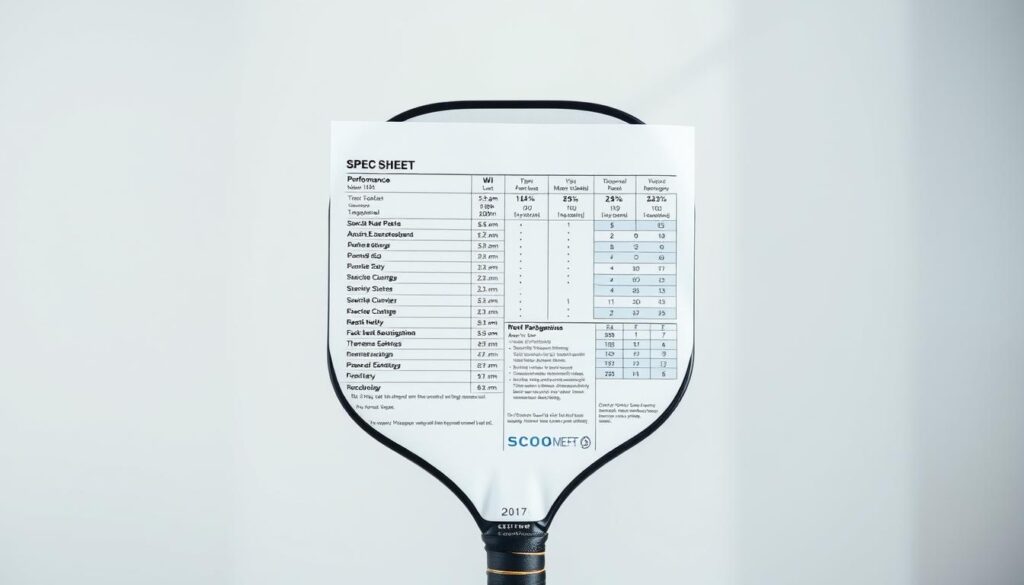
Start with the basic specs that show up in most pickleball paddle comparison charts. Core material and core thickness tell you whether a paddle will favor power or control. Static weight affects how the paddle feels at rest. Swingweight and twistweight predict on-court behavior better than ounces alone.
Next, check shape and facing material. Widebody, hybrid, and elongated profiles change reach and sweet spot size. Carbon fiber faces usually deliver crisp response. Fiberglass offers a softer touch. These facing choices pair with core specs to shape real-world play.
Key specs to prioritize when you compare paddles online
Prioritize this short list when doing a pickleball paddle comparison. First, core material: polypropylene vs foam. Second, core thickness: common options are 14mm and 16mm. Third, swingweight and twistweight for feel and forgiveness. Fourth, static weight and paddle shape. Fifth, facing and layup for spin and power.
- Core material — affects pop and damping.
- Core thickness — thicker cores usually give bigger sweet spots.
- Swingweight — links to perceived power and momentum.
- Twistweight — predicts how easily the paddle resists off-center hits.
- Facing material — controls spin and touch.
How to interpret cell size, cell wall thickness, and polymer density
Cell size shows up less often, yet it matters. Larger cells, around 10mm, rebound more and add pop. Smaller cells, near 6mm, stabilize bounce for better control. The 8mm cell is a common middle ground.
Cell wall thickness changes response. Thinner walls increase pop and liveliness. Thicker walls slow the rebound and favor control. Brands rarely list exact wall thickness, so you must rely on teardown data or trusted pickleball paddle reviews for that detail.
Polymer density is the hardest spec to find. A softer polymer feels springy and lively. A denser polymer gives a firmer, more controlled response. You will often see polymer characteristics explained in lab tests or expert reviews rather than on the spec sheet itself.
Why swingweight and twistweight often predict real-world performance
Swingweight correlates with perceived heft during your swing. A higher swingweight helps drive the ball with less effort. Aim for a balanced range of 112–118 if you want a mix of power and maneuverability.
Twistweight measures resistance to off-center torques. A higher twistweight means fewer mishits and a larger usable sweet spot. Look for twistweight numbers above 6 for better forgiveness on fast exchanges.
When brands omit these values, consult independent test labs and databases. Pickleheads and other reviewers publish measured swingweight and twistweight in many pickleball paddle reviews. Cross-check those figures when doing a spec sheet-based pickleball paddle comparison to find a top rated pickleball paddle that matches your game.
| Spec | What it tells you | Target for balanced play |
|---|---|---|
| Core material | Power vs control (polypropylene = livelier; foam = softer feel) | Choose based on your style |
| Core thickness | Sweet spot size and pop (14mm = firmer control; 16mm = more forgiveness) | 14–16mm depending on preference |
| Swingweight | Perceived power and momentum during swing | 112–118 for balanced play |
| Twistweight | Forgiveness and off-center stability | >6 for better forgiveness |
| Cell size | Rebound characteristic (larger = more pop; smaller = more control) | 8mm common; 6mm for control, 10mm for pop |
| Cell wall thickness | Determines pop vs damping (thinner = more pop) | Thicker for control, thinner for lively response |
| Polymer density | Overall firmness and feel (softer = springier) | Choose based on playtesting or reviews |
| Facing & layup | Spin potential and touch (carbon, fiberglass, kevlar) | Carbon for crisp control; fiberglass for touch |
| Static weight | Base feel at rest; affects maneuverability | Pick a weight that suits your arm and style |
Matching paddle tech to your playing style and level
You need a paddle that fits how you play. Choices for core, face, weight, and shape change feel, forgiveness, and spin. Use the short guide below to match your level with real models and sensible specs.
Best paddles for beginners: forgiveness, lighter weight, big sweet spot
Beginners need wide shapes, 16mm foam or polymer cores, and light weights between 7.3 and 8.0 oz. These features boost forgiveness and reduce arm strain on fast exchanges.
Good starter picks include Friday Original for value and JOOLA Essentials for durability. Both show up in many pickleball paddle reviews as true beginner-friendly options.
Best paddles for intermediates: balance of spin, control, and durability
At this level, you should seek a blend of control and spin. Carbon or T700 faces with a foam or polymer core offer that tradeoff. Aim for medium swingweight and a balanced profile.
Models like 11SIX24 Pegasus and Vatic Pro PRISM Flash deliver spin and reliable pop without sacrificing control. Check pickleball paddle reviews to validate durability and feel before you buy.
Best paddles for power players and tournament play
Power players want thinner cores around 14mm, higher swingweight, and elongated shapes for reach and pop. Fiberglass layers or mixed layups amplify speed on drives and smashes.
Selkirk LABS Project Boomstik and JOOLA Perseus Pro IV rank high among tournament pros. If you’re shopping for a paddle for pickleball tournaments, prioritize head-heavy balance and proven power in playtests.
Real examples from testing and reviews
Use real test results to narrow choices. Honolulu Sword & Shield J2NF scores as a top foam option with low swingweight, large sweet spot, and forgiving play. CRBN TruFoam Genesis 4 represents next-gen foam tech with long life and balanced response.
Bread & Butter Filth leans toward explosive power for aggressive players. Vatic Pro PRISM Flash and 11SIX24 Pegasus show strong spin and value for mid-price players. JOOLA Perseus Pro IV and Selkirk project-level sticks suit those chasing tournament performance.
| Player Level | Key Specs | Example Models | Why it fits |
|---|---|---|---|
| Beginner | 16mm core, wide shape, 7.3–8.0 oz | Friday Original, JOOLA Essentials | Large sweet spot, light feel, great value |
| Early Intermediate | Balanced weight, carbon/T700 face, foam/polymer core | 11SIX24 Pegasus, Vatic Pro PRISM Flash | Good spin, control, and price-performance |
| Advanced / Power | 14mm core, fiberglass or mixed layup, higher swingweight | Bread & Butter Filth, JOOLA Perseus Pro IV, Selkirk LABS Project Boomstik | Max pop, reach, and tournament-grade performance |
| Next-gen foam seekers | Foam unibody, durable cores, mid-to-high price | Honolulu Sword & Shield J2NF, CRBN TruFoam Genesis 4 | Longevity, soft touch, consistent sweet spot |
| Spin/control specialists | T700 carbon face, moderate swingweight | Six Zero Double Black Diamond, Vatic Pro PRISM Flash | High spin, fine touch, court-velocity control |
When you read pickleball paddle reviews, compare specs to how you move and what shots you favor. Pick a model that supports your growth path. The right best pickleball paddle for you will feel natural on day one and still suit your game as skills improve.
the best pickleball paddle — comparing top rated pickleball paddle options
Looking for a quick guide to find the perfect paddle? This comparison focuses on price, playtesting scores, and durability. It highlights the differences between top brands like Selkirk, CRBN, and JOOLA.
Side-by-side comparison criteria
First, consider the paddle’s material and thickness. Look at its shape and static weight. Then, check its swing and twist weights for feel.
Also, examine the construction generation for durability. Use playtesting scores for control, power, and forgiveness to make your choice.
Top rated paddle use cases
The Honolulu J2NF is great for all-around play. For a budget-friendly option, the 11SIX24 Pegasus Jelly Bean is a good choice. CRBN TruFoam Genesis 4 offers comfort and durability.
Power players should check out the Bread & Butter Filth or Selkirk Boomstik. Beginners might prefer the Friday Original. For control, try the Six Zero DBD. Intermediates often like Pickleball Apes Pulse S.
Pro players should test the JOOLA Perseus Pro IV and Vatic Pro PRISM Flash. These paddles offer refined touch and tournament-ready specs.
Where to buy pickleball paddle online and how to use discount codes safely
Buy from official stores and trusted retailers like Selkirk and Dick’s Sporting Goods. Check for returns and USAPA approval. Use codes like PICKLEHEADS at checkout.
Compare prices, including sales and shipping. Make sure any changes comply with USAPA rules. Use spec databases and tests to judge durability before buying.
Conclusion
You don’t need to find just one perfect paddle to play better. This guide helps you compare important features like material, shape, and weight. The Honolulu Sword & Shield J2NF is a top choice for many because it’s affordable and forgiving.
Other paddles might be better for power, touch, or saving money. Always check the specs like cell size and weight. This tells you how the paddle will feel in your hands.
Choose a paddle based on your skill level. Beginners need paddles that are easy to handle. More advanced players might prefer paddles for better spin and durability.
Before buying, read reviews and try out paddles if you can. Shop from trusted places and use discounts to save money. With the right paddle, you’ll see a big improvement in your game.
